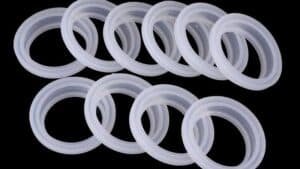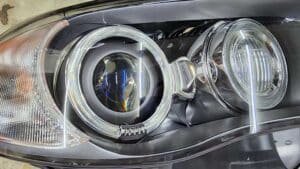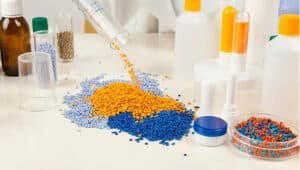What is Medical Injection Molding?
Medical injection molding is a precision manufacturing process that shapes biocompatible plastics into high-quality components for healthcare applications. By injecting molten plastic into precisely designed molds, this technique ensures tight accuracy and compliance with strict safety, sterility, and performance standards. It enables the production of critical medical devices ranging from syringes to complex implants through medical device plastic molding, delivering reliable and consistent parts essential for the healthcare industry.
Types of Medical Molding Processes
The versatility of medical injection molding stems from its diverse processes, each tailored to specific medical needs.
Standard Injection Molding
This is the foundational process of medical plastic injection molding. Molten plastic resin is injected under high pressure into a mold cavity, cooled, and ejected as a finished part. It is widely used to produce high-precision, complex medical components such as syringes, specimen cups, and IV components. This method supports high-volume production with excellent repeatability and dimensional accuracy.
Micro-Molding
Micro molding specializes in producing extremely small and intricate parts with high precision, such as microfluidic devices and tiny connectors. It requires specialized equipment and molds to handle minute volumes of molten plastic.
Insert Molding
Insert molding involves placing a pre-formed insert—often metal, plastic, or ceramic—into the mold cavity before injecting plastic around it. This creates a strong bond between the insert and molded plastic, either molecular or mechanical. It eliminates the need for adhesives or secondary assembly steps. Insert molding is commonly used for producing needle hubs, luer fittings, and encapsulated electrical components in medical devices.
Overmolding
Overmolding is a two-step process where one material is molded over another, often combining rigid and soft materials. For example, a soft silicone grip can be molded over a hard plastic base. This technique enhances ergonomics and functionality in medical tools and devices.
LSR Molding
LSR molding uses liquid silicone rubber, which is injected and cured inside the mold. Silicone’s biocompatibility, flexibility, and chemical resistance make this process ideal for producing seals, tubing, respiratory masks, and other soft medical components. The process requires strict cleanroom conditions to maintain hygiene and product quality.
Thin-Wall Injection Molding
Thin-wall molding specializes in producing parts with extremely thin walls, often less than 1 mm thick. This technique reduces material usage and weight, which is critical for lightweight, disposable medical devices. It also enables faster cycle times, making it cost-effective for large-scale manufacturing of small enclosures and housings in medical devices.
Common Materials Used in Medical Molding
Polycarbonate (PC): PC offers excellent impact resistance, resistance to vibration, heat, UV light and clarity. The ability to withstand sterilization processes ensures long-term reliability in demanding medical environments.
Polypropylene (PP): Highly heat-resistant and durable, PP is a top choice for medical device injection moulding of parts requiring frequent autoclave sterilization. Its chemical resistance, low cost, and ease of processing make it commonly used in disposable medical products such as syringes and specimen containers.
Polyethylene (PE): With its high molecular weight, PE is lightweight, flexible, and biocompatible, making it ideal for molding medical components like tubing, catheters, and wearable devices. It is less resistant to autoclave sterilization.
Silicone: Medical-grade silicone is prized for its flexibility, biocompatibility, and resistance to extreme temperatures. It is widely used in seals, catheters, and implantable devices.
Polyetheretherketone (PEEK): PEEK’s exceptional resistance to chemicals, radiation, wear, and high temperatures makes it a premium material for medical injection molding. Used in orthopedic devices, dental implants, healing caps, and spinal fusion devices, PEEK’s durability and sterilizability ensure long-term performance in high-performance applications.
Polystyrene (PS): PS provides excellent impact resistance, dimensional stability, and FDA compliance, making it a cost-effective choice for medical device plastic molding. Its non-toxic, odorless, inexpensive and lightweight properties are perfect for Petri dishes and test tubes.
Material Selection Considerations
Choosing materials for moulding medical components involves balancing biocompatibility, sterilization compatibility, durability and cost effectiveness. Compliance with FDA and ISO 13485 standards ensures regulatory approval. Tailored material selection optimizes performance, safety, and patient outcomes in medical device injection moulding.
Advantages of Medical Injection Molding
Medical injection moulding offers plenty benefits, including:
- High Precision and Repeatability: Injection molding produces parts with tight tolerances, essential for medical applications.
- Reduced Assembly: Insert molding and multi-component molding reduce the need for post-production assembly.
- Cost-Effectiveness: Once molds are created, injection molding process supports rapid mass production, reducing per-unit cost.
- Complex Geometry Capability: The technique can produce intricate parts that would be difficult or impossible with other manufacturing methods.
- Scalability: Medical injection molding allows rapid production scaling, meeting market demands efficiently while maintaining consistent quality.
- Regulatory Compliance: Processes can be designed to meet FDA and ISO standards.
- Material Versatility: A wide range of biocompatible plastics can be used, tailoring solutions to diverse applications in molding medical devices.
Applications of Medical Molding
Medical injection molding produces a diverse array of components. Its applications span a wide range of devices.

- Disposable Medical Supplies: Syringes, IV components, catheters, and specimen containers.

- Surgical Instruments: Handles, housings, and precision parts.

- Seals and Gaskets: Silicone molded components for fluid control and sealing.

- Drug Delivery Systems: Inhalers, pumps, and injection devices.

- Implantable Devices: Components made from high-performance polymers like PEEK.

- Diagnostic Equipment: Casings, connectors, and microfluidic devices.

- Medical Equipment Housings: Durable and transparent parts for monitors and imaging devices.
Medical Molding Standards and Requirements
The production of molding medical components demands strict adherence to industry standards to ensure safety, efficacy, and market approval.
FDA Regulations: FDA regulations govern material selection and manufacturing processes, requiring biocompatibility and sterility for all medical device plastic molding applications.
ISO 13485: ISO 13485 certification ensures robust quality management systems, guaranteeing consistent production quality. Cleanroom manufacturing, often conducted in ISO Class 7 or 8 environments, minimizes contamination risks for devices like catheters and implants.
Biocompatibility Testing: Ensures materials do not cause adverse biological responses.
Sterilization Validation: Processes must validate that sterilization methods do not compromise device integrity.
Traceability: Documentation and batch control are critical for quality assurance and recall readiness.
Latest Innovations and Future Trends in Medical Molding
Medical injection molding is advancing rapidly with innovations like data-driven scientific molding, ensuring precision and repeatability for complex components. AI integration enhances real-time process monitoring, predicting defects and boosting efficiency. 3D-printed molds enable cost-effective, customized prototyping, while biodegradable and recyclable polymers reduce environmental impact. Additionally, patient-specific solutions, such as custom implants, support personalized healthcare through advanced medical device plastic molding.
Zhongren’s Custom Medical Molding Services
At Zhongren, we bespoke solutions tailored to your needs. Our state-of-the-art facilities and expert engineers deliver end-to-end services, from design optimization to material selection and high-precision medical plastic injection molding. Compliant with FDA and ISO 13485 standards, we ensure biocompatibility, sterility, and unmatched quality.





